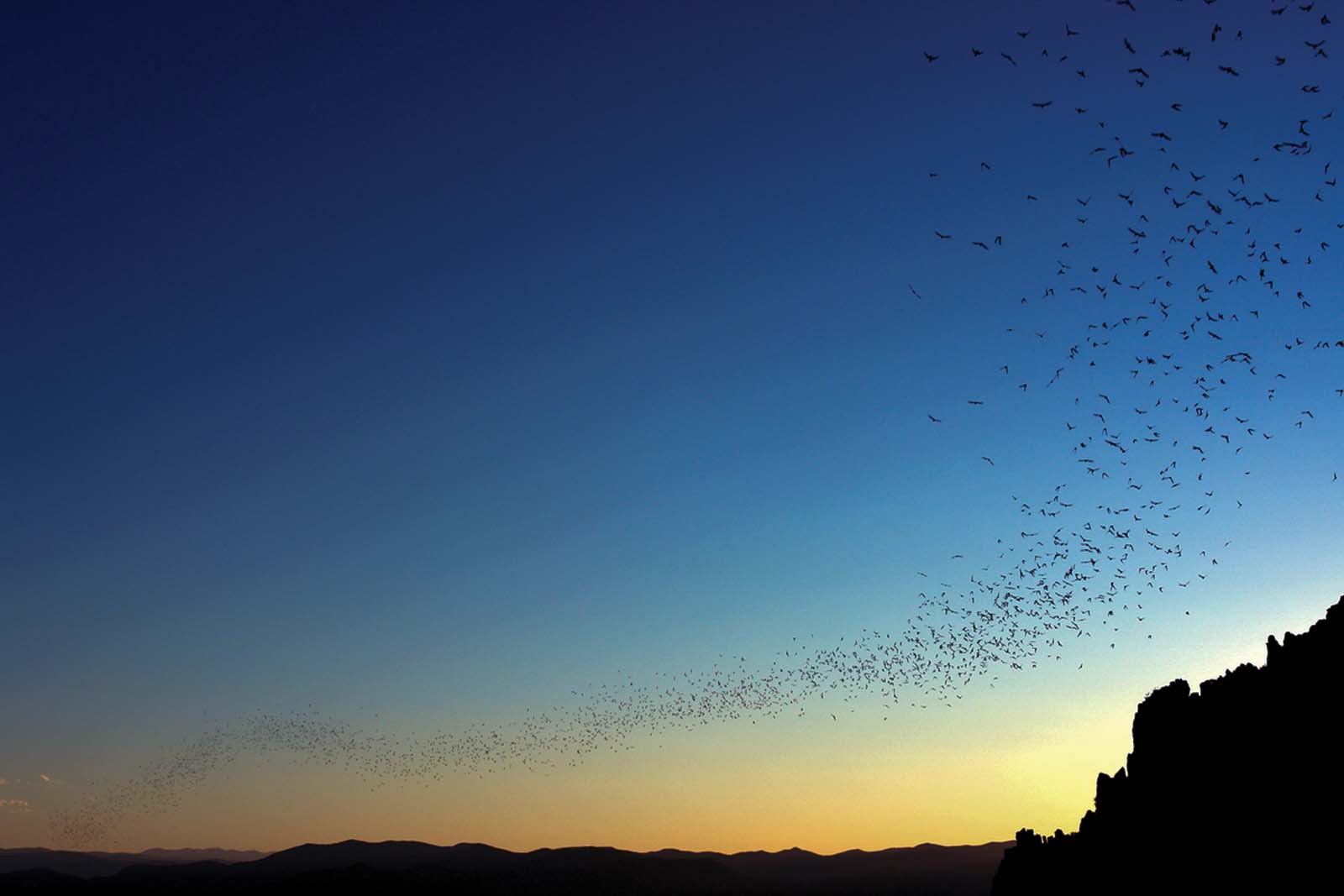The Local newsletter is your free, daily guide to life in Colorado. For locals, by locals.
Each summer evening, as the sun sets over the San Luis Valley, black clouds billow from the mouth of an abandoned iron mine on the western slope of the Sangre de Cristo Mountains. Bats fly out of the cavern in waves, swooping past scrub oak and piñon pines—and, occasionally, human bystanders who have come to gawk. It’s time for these nocturnal creatures to hunt.
You’ve likely heard of more renowned bat caves, such as those in Carlsbad Caverns National Park, but their colonies comprise mainly females and their offspring. The San Luis Valley’s Orient Mine hosts the largest colony of Mexican free-tailed bats in Colorado. But unlike at Carlsbad, the Orient Mine’s occupants are part of a bachelor colony—i.e., it’s majority-male. While almost-all-dude fraternities aren’t unheard of (females typically live separately with the kids so they don’t have to compete for food), their rosters tend to number in the hundreds or low thousands. The Orient, in contrast, houses 100,000 male bats on average from June to early July. By the end of this month, the colony’s population will swell as high as 250,000 as the ladies and their pups meet up with the guys in preparation for winter migration.

The Orient bats aren’t the only creatures who’ve made this region home. Neil and Terry Seitz, the then owners of nearby Valley View Hot Springs, established an approximately 2,200-acre slice of protected land called the Orient Land Trust (OLT) in 2001 to preserve the mine, the resort, the historical Everson Ranch, and the organisms that love the balmy microclimate found within a few feet of the warm streams feeding the springs. Temps here can hover 10 degrees higher than nearby spots, rewarding visitors with glimpses of one of Colorado’s few orchid species (the pink and yellow giant helleborine) and a rare snail called the hot springs physa. One of the state’s only firefly populations also lights up the OLT’s night skies.
Bats love the habitat, too, spending most of their waking hours in its wetlands and agricultural plots, where insects thrive. Each night, the OLT colony consumes thousands of moths, beetles, and mosquitoes. Appetites sated, they return to the mine at dawn, ready to sleep the day away like any other band of bloated bros.
$35: Annual minimum donation required to reserve, in advance, a camping spot or cabin at Valley View Hot Springs. Tent spaces start at an additional $10 a night; lodging can range from $15 for a dorm bed to $75 for a cabin.
Gone Bat Crazy?
Good: Here’s what you can do while visiting the Orient Land Trust.

Ogle The Bats
Free guided hikes to the Orient Mine—timed so you arrive when the bats leave to hunt—depart from the Valley View Welcome Center a few hours before dusk on summer nights, barring an onset of severe weather.

Help Out On The Farm
The 146-year-old Everson Ranch is undergoing renovations to become a sustainable agriculture and educational center. But the 760-acre complex continues to host daily tours from 10 a.m. to 4 p.m. Check in at the welcome center to see if the staff needs any help tending the flower and vegetable gardens.
Go Au Naturel
Even with all these bats on the loose, the entire OLT is clothing-optional, whether you’re soaking in one of Valley View’s six spring-fed pools (we like the Meadow Pond for its relative privacy) or hiking almost two miles from the welcome center to the mine. —SM









